- Home
- Louis L'Amour
Sacketts 00 - The Sackett Companion (v5.0) Page 14
Sacketts 00 - The Sackett Companion (v5.0) Read online
Page 14
Fur trappers and traders often used them to keep track of the numbers of skins of various kinds. It was about the only system of bookkeeping known to most of the early westerners.
INDIANS: Contrary to what many might believe, the relationship between whites and Indians was often friendly. Troublemakers were often new men out from the East with preconceived notions about Indians. Some tribes were always friendly, others were friendly only at times, and certain ranchers and western men won friends from among the Indians that lasted down the years. Very few Indians fought for their land. The idea that they might lose it was beyond their conception, until it was much too late. Indians fought for scalps, for loot, for any one of a dozen reasons, just as white men did. A wagon train or ranch house represented a treasure trove to an Indian, just as Sir Francis Drake looked to the Spanish galleons he attacked for profit. Personally, I resent the impression that the Indian was a poor creature of whom the white man took advantage. The American Indian was a fine, fierce fighting man of great personal pride and reasons for it. His trouble was that while he had to breed his future generations of warriors, which took time, there seemed to be, for some distant source of which he knew nothing, an endless supply of white men.
From my personal study, reading of reports, diaries, and early newspapers, my impression is that for every Indian who died in the settling of the West at least ten white people died. Not necessarily in fighting, though by one means or another.
But I object to the picture of the Indian as portrayed by some of those who profess to love him. No finer figure of a man ever lived than an Indian mounted and ready for battle. Among the Indians, also, were some of the finest orators, men whose speeches stand comparison with the best of Demosthenes or Winston Churchill, orators with a gift for picturesque language. The Indian was a Stone Age man, yet in his speeches and stories he often revealed a sensitivity, and sense of beauty and judgment far beyond what has usually been accorded such people. If the American Indian was an example of what Stone Age man could be, I believe that all our ideas on such peoples are subject to drastic revision.
NATIVITY PETTIGREW: A man who wanted it all; a deceptive, conniving man who seemed bland and simple, an appearance that served to conceal what he really was, a man ready for murder if it served his purposes. His first name is not unusual for that time. Many names were taken from the Bible, not only because most people were closer to religion than now but because the Bible was often the only source of names available. Birth control was rarely a factor in the thinking of early Americans, and large families were the norm. Moreover, on a farm or ranch, children, particularly boys, could be an economic asset. If family names were used, the parents soon ran out of Johns, Henrys, and so on, and sought recourse in the Bible, if they had not begun that way.
The gold on Treasure Mountain is probably still there, but as I’ve said, it’s a big mountain and whoever finds it will probably do so by accident. You can be sure it was buried deep and well because it was an engineer who did it, and he and his men expected to return for it with a larger force. Anybody who buries gold does not expect to leave it in the ground for long, but the French army officer who is said to have supervised the burying also expected to have a good-sized force with him, and he didn’t plan on doing any of the digging.
There is gold in the San Juans, and silver also, but the real treasure is in the air, the trees, the wildflowers, and the big, wide, open wonderful country. If you don’t have it, all the money in the world won’t buy it. And it is there for anybody who will use it kindly.
LONELY ON THE MOUNTAIN
First publication: Bantam Books paperback, November 1980
Narrator: William Tell Sackett
Time Period: c. 1875–1879
When Logan sent word that he was in trouble in the far north and needed a herd of cattle to get him out of it, the other Sacketts never gave it a second thought. They would find the cattle, and drive them north even if there were Higginses involved.
The Sackett-Higgins feud now seemed to have played itself out, but for years the name Higgins had meant trouble for a Sackett. Hence, when the Sacketts needed a code word for trouble they used the Higgins name.
The Dakota country in those days was Sioux country, as the name itself implies. The Sioux were a proud, often arrogant people who, starting from the Wisconsin-Minnesota border country had, after acquiring horses, become a conquering people. Sweeping westward they conquered much of Minnesota, all of the Dakotas, and well into Wyoming and Montana as well as southward into Nebraska, before conflict with the white man brought their conquests to a halt.
The Sacketts had to make their drive through the heart of Sioux country, and the valley referred to where the James River and the Pipestem meet is the valley where I was born. It was a green and lovely place then and as good a place to hold cattle as any I know, with plenty of grass, water, and shade.
There were rarely any Indians around when I was growing up except a few who occasionally dropped by to talk to my grandfather. They would sit cross-legged on the lawn and drink coffee heavily laced with sugar and talk over old battles as those who came later would talk of football games.
There were also a few who occasionally camped down near the tracks where some old stumps with huge masses of spiderlike roots were lying.
These were, I understood, trees ripped up from miles away by a tornado and dropped here. The tops had long been cut away for firewood but the stumps remained. They had been giant trees, larger than any around in my time with a few possible exceptions.
In the days when the Sacketts rested their herd near the rivers it was all Indian country. Soon settlers would be coming in, many of them former soldiers such as my grandfather who had first seen the country when pursuing the Sioux into Dakota after the Little Crow Massacre in Minnesota.
The troubles in Canada were drawing adventurers, land speculators, and others all out to pick up a little quick money if opportunity allowed. Pembina was a gathering point for those traveling north, as it had been for fur trappers and traders at a still earlier time, and Fort Garry was usually the immediate destination. Louis Riel had returned from Montreal in an attempt to forestall these would-be landgrabbers. It was unfortunate that his actions were misunderstood by many of the eastern Canadians.
FORT CARLTON: A fairly large palisaded enclosure with bastions at each corner. It stood back about a quarter of a mile from the North Saskatchewan in an almost parklike setting of green hills and clumps of forest. It was a regular stopping place for parties going west and often a dropoff for furs whose owners wished to approach no nearer to civilization.
The fort was established about 1795, and the first steamer to come that far up the river arrived in 1877, the Northcote. Shortly after, a regular service was established on the river and maintained for some time.
Carlton House was also a headquarters for the Mounted Police, and witnessed a confrontation there with Big Bear, a Cree. Later, Poundmaker, one of the most noted chiefs, spent time in the area. At the time of this story there were only traders and trappers at Fort Carlton.
TURTLE MOUNTAINS: A gathering of hills, lakes, and rolling plateau some three hundred-odd feet above the surrounding country. The borderline runs through the mountains, leaving a part of them in Canada. A favored hunting ground of the Indians in bygone years.
PEMBINA: Named for the colorful highbush cranberries growing in the area, a Chippewa name. Charles Chabboillez established a fur trading post there in 1797, and it soon became a gathering point for the métis. the French-Indian buffalo hunters who formed their expeditions there for buffalo hunts. These were highly organized, sometimes accompanied by more than a thousand Red River carts, and more than that number of people. They were disciplined, carefully coordinated hunts by skilled hunters. Pembina was to remain an important port in the Red River for many years.
HAWK’S NEST: A flat-topped hill rising some four hundred feet above the plains, with a spring near its top. This was long a camping place f
or Indians moving across the country, and a well-known landmark for travelers. The hill was well-forested. Sibley camped near here before the Battle of Big Mound. My great-grandfather, Lieutenant Ambrose Freeman, had been slain by the Sioux about a week earlier, at a point further east.
FORT GARRY: Later, it became Winnipeg. At the junction of the Assiniboine and Red Rivers. The Fort was originally built in 1806, and destroyed in 1816, known then as Fort Gibraltar. In 1822, when the Hudson’s Bay Company and the Northwest Companies became one, the Fort was rebuilt and christened Fort Garry. In 1835 it was rebuilt in stone with round bastions at each corner with embrasures for guns and frequent loopholes for muskets. The walls were about twelve feet high with a wooden walk near the top from which to fire in defense. The residence of the Hudson’s Bay Company governor faced the north gate. Four other buildings were barracks for soldiers, each fitted to accommodate one hundred men. There were other buildings, including a store and an officers’ quarters.
The village that was the beginning of Winnipeg lay about a half mile from the Fort. The road was lined with houses, forty or fifty in number; a chemist’s shop, several saloons, an hotel and a saddle shop were among other places of business. In the village of St. Boniface there was a cathedral, and several other churches, including an Anglican cathedral and a Presbyterian church.
McCAULEYVILLE, MINNESOTA: Riverboat town; white frame hotel owned and operated by Nolan. A clean, well-kept place. There were a number of houses in the village, which lies across the river from Fort Abercrombie.
DEASE LAKE AND RIVER: Relatively easy of access today, but in the 1870s it was back of beyond, one of those places often heard about but rarely visited. Chief Trader McLeod discovered Dease Lake in 1833, and some three years later a man named Hutchinson was sent with a party to open a trading post there. Word got out they were to be attacked by Russians and they fled. Irritated, Sir George Simpson commissioned Robert Campbell to explore the area of the upper Stikine and Pelly Rivers. A post was established and held briefly, then abandoned for some thirty-five years.
BARKERVILLE AND THE CARIBOO: Billy Barker is credited with the first rich strike in the vicinity of the town named for him. He was a tough little man who had been a potter and then went to sea. He was forty feet down and about to give up when he hit pay dirt, and took out better than six hundred thousand in gold if sold at 1860s values. Like so many of his kind, Billy met a lady, who was less than a lady, and Billy Barker wound up broke. He died in Victoria in 1894, and no doubt the lady met a gentleman who was less than a gentleman who no doubt spent her money and abandoned her.
The Cariboo was the name given to a district between Quesnel and Barkerville, and gold was found over the whole area in greater or lesser quantities. Later the name came to be extended to cover more country and was a symbol for riches, if you could get them. There was Cache Creek in that same area, and stories of buried gold and of a running horse with blood on his saddle, and a ghost who watched over the cache, wherever it was.
Laketon, near the mouth of Dease Creek, was for a time the metropolis of the Cassiar district and, as with all such places, the town bred its collection of characters and inherited a few from the surrounding country. They were men of grand deeds and fearsome appetites and there was little they would not do in their quest for gold. They included Cariboo Cameron, Dutch Bill, Nellie Cashman, and many others.
MARY McCANN: A much-traveled lady who could ride anything that wore hair and do a man’s work as well as her own; an attractive lady who added poundage without losing shape. In E-Town she ran a saloon-restaurant, and in Bodie she washed clothes for the miners and panned out the mud she washed from them and made four times as much as she charged for the washing. She and Cap Rountree had crossed trails before and the results had been mutually agreeable.
SHANTY GAVIN: A handy man with a gun who believed he was big time until he met a big timer. It was a mistake that could only be made once.
COUGAR: No excuses for him; he recognized the situation and did not make the mistake the first time. But there was a second time.
DEVNET MOLRONE: Her last relative but one had died, and there was but little money, with employment for women almost nonexistent. Fortunately, she had a brother. She trusted he would care for her, until.…
She did not guess how wild Prince Rupert’s Land was but was sure she could find her brother. Yet she did not know how wide the land nor that her brother had changed.
THE OX: He was large, strong, and sure of himself. His sheer size and presence usually got him what he wanted—until he suddenly got more than he wanted.
GILCRIST: A sandlot winner about to face big league pitching; how good you look depends on how tough the competition. You win a few and get to believing you’re good, and then you try to prove it against somebody who is really good. The next morning they are patting you in the face with a shovel, and somebody is writing an epitaph: He was good, but not good enough.
THE CENTURY AND THE ATLANTIC: Magazines referred to in the story. Such magazines were widely circulated on the frontier, and as with all other reading material passed from hand to hand until worn out. SCRIBNER’S was another magazine frequently found at trading posts, forts, and other frontier establishments.
HIGHPOCKETS HANEY: Any tall, lean man of six feet four inches or more was apt to be nicknamed “Highpockets.” This one was a top-hand in any company.
DOUG MOLRONE: A young man of education and intelligence who simply took the wrong route. A brother to Devnet, he lacked her strength of character and left town running. Such characters have a way of turning up again. Did he learn his lesson or not?
ORRIN SACKETT: Self-educated lawyer, peace officer, and congressman, a man of engaging personality with a fine speaking or singing voice and only a shade less good with a gun than Tyrel or Tell.
Growing up where hunting was a daily occupation, all the Sacketts could handle guns. Growing up with an already existing feud going on, all lived with the awareness of danger.
Orrin began his study of law as did many frontier lawyers, by carrying a copy of Blackstone wherever he went and reading whenever opportunity allowed. He had also studied Greenleaf on Evidence and then for two years worked with a country lawyer. His first marriage to Laura Pritts ended in divorce.
He was the best educated of the postwar generation of Sacketts.
LOGAN SACKETT: One of the Clinch Mountain Sacketts, descended from Yance. They were generally a wild, rough lot, the Clinch Mountain Sacketts, considered outlaws by some, and when they went west they were always riding on the fringe of the wild bunch. A twin brother to Nolan Sackett, but they were rarely seen together, each preferring to go his own way, yet on occasion.…
Logan has also appeared in RIDE THE DARK TRAIL.
LAURIE GAVIN: A blood sister to Kyle, and Shanty Gavin was her stepbrother. She was in the Dease River country with no place to go but out, if she could get out. And then she met Logan.
ISOM BRAND: Called Brandy; a young cowboy hired en route. Like many others of his time and later, he had left home to find work wherever and however it could be had. Much of our country was built by such itinerant labor.
SHORTY: A man to ride the river with, and a man who rode for the brand. A man with a love for far horizons, and when he cashed in his chips they buried him where his grave overlooked a lot of beautiful country, with horizons wherever you turned. Shorty would have liked it that way.
BAPTISTE: An old man who wasn’t that old and took to the trail again. Once they’ve traveled the trails of a far country, there is always the urge to go on to a still farther country.
KYLE GAVIN: From Toronto, and headed west, but for what? A full brother to Laurie, and a connection by name only to Shanty Gavin. He, too, wanted to stop the delivery of cattle and hoped to profit from the jumped mining claims, but he was prepared to go only so far, and as the situation developed he became uneasy. His moral judgment was possibly nudged into place by the possibility of decisions by Winchester.
THE MÉTIS: A French-Canadian-Indian mix; hunters and trappers, famed for their well-organized buffalo hunts and their rebellion. The latter began as an effort to protect their rights in land long occupied by them when surveyors appeared and began surveying right across what the métis considered their property lines. Louis Riel, whose father had been a spokesman in the past, was sent for by his mother to return from Montreal. He endeavored to set up a provisional government that would keep things under control until the eastern Canadians decided whether they wanted to be bothered with Prince Rupert’s land or not.
The métis were a colorful lot in costume, song, and language. Some of their boating songs, sung to accompany their paddling of canoes or larger boats, are favorites of mine. My father often sang them and since then I’ve heard them sung by Canadian lumberjacks with whom I’ve worked.
As for the mix mentioned above there might also be added a touch of Scotch here and there. Many of the early Bay Company factors were Scots, and others came west and fell into the fur trade as if born for it.
Western Canada was a country of rare beauty, of vast distances, and forests that seemingly went on forever, with some fine rivers and along the coast many islands and coves that permitted easy access to the country. There was gold and there was fur, but most of all was the country itself.
There was plenty of wild game, and a man with a rifle could live mighty well without even half trying. The métis were great hunters and had some of the finest horseflesh you’d be likely to see.
They also had the Red River carts, often to be seen in long caravans stretched across the country, carrying buffalo hides to market or bringing back the goods they’d bought in St. Paul or Minneapolis.
It was a wild and beautiful land to which the Sacketts rode, and they were the men to understand and appreciate it.
RIDE THE DARK TRAIL
First publication: Bantam Books paperback, June 1972

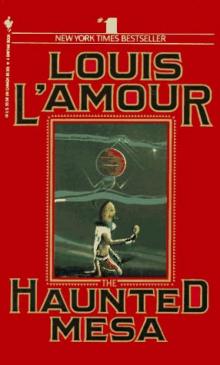 Novel 1987 - The Haunted Mesa (v5.0)
Novel 1987 - The Haunted Mesa (v5.0)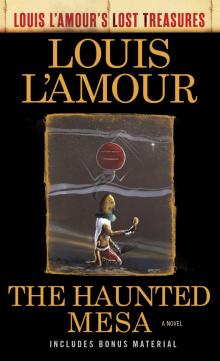 The Haunted Mesa (Louis L'Amour's Lost Treasures)
The Haunted Mesa (Louis L'Amour's Lost Treasures)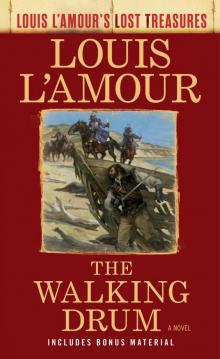 The Walking Drum (Louis L'Amour's Lost Treasures)
The Walking Drum (Louis L'Amour's Lost Treasures)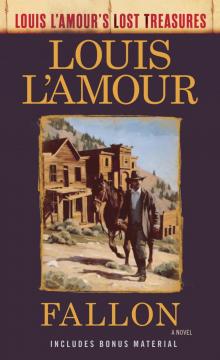 Fallon (Louis L'Amour's Lost Treasures)
Fallon (Louis L'Amour's Lost Treasures)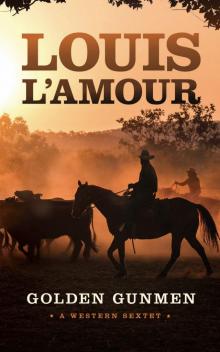 Golden Gunmen
Golden Gunmen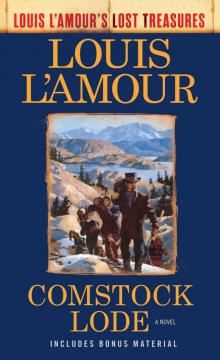 Comstock Lode
Comstock Lode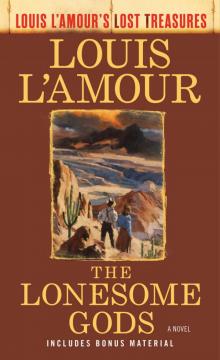 The Lonesome Gods (Louis L'Amour's Lost Treasures)
The Lonesome Gods (Louis L'Amour's Lost Treasures)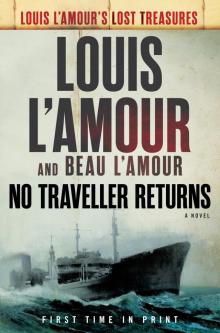 No Traveller Returns (Lost Treasures)
No Traveller Returns (Lost Treasures)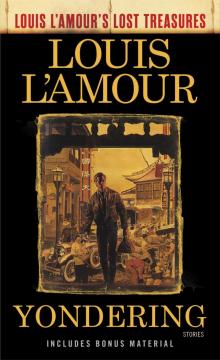 Yondering: Stories
Yondering: Stories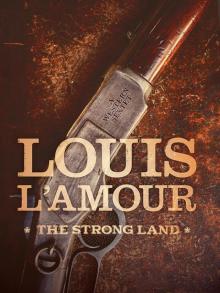 The Strong Land
The Strong Land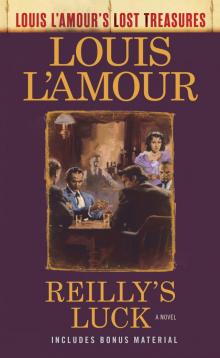 Reilly's Luck (Louis L'Amour's Lost Treasures)
Reilly's Luck (Louis L'Amour's Lost Treasures)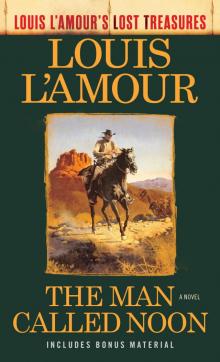 The Man Called Noon (Louis L'Amour's Lost Treasures)
The Man Called Noon (Louis L'Amour's Lost Treasures)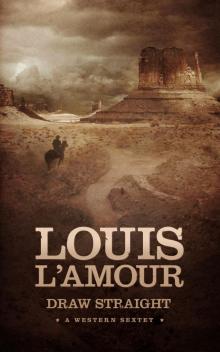 Draw Straight
Draw Straight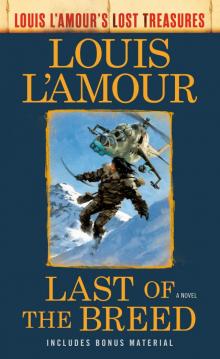 Last of the Breed (Louis L'Amour's Lost Treasures)
Last of the Breed (Louis L'Amour's Lost Treasures)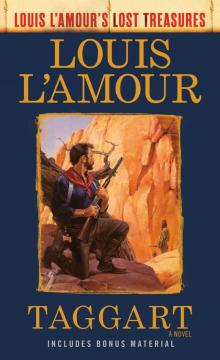 Taggart (Louis L'Amour's Lost Treasures)
Taggart (Louis L'Amour's Lost Treasures) The Hopalong Cassidy Novels 4-Book Bundle
The Hopalong Cassidy Novels 4-Book Bundle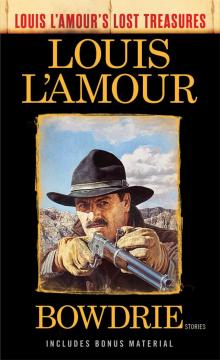 Bowdrie_Louis L'Amour's Lost Treasures
Bowdrie_Louis L'Amour's Lost Treasures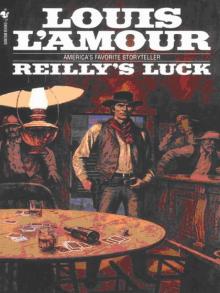 Reilly's Luck
Reilly's Luck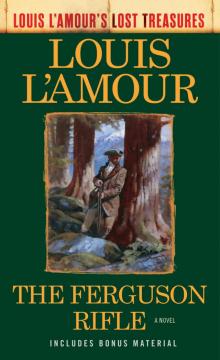 The Ferguson Rifle (Louis L'Amour's Lost Treasures)
The Ferguson Rifle (Louis L'Amour's Lost Treasures)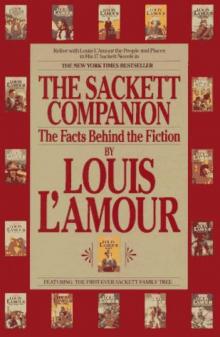 Sacketts 00 - The Sackett Companion (v5.0)
Sacketts 00 - The Sackett Companion (v5.0) The Chick Bowdrie Short Stories Bundle
The Chick Bowdrie Short Stories Bundle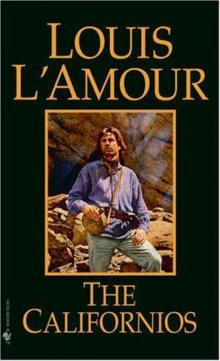 Novel 1974 - The Californios (v5.0)
Novel 1974 - The Californios (v5.0)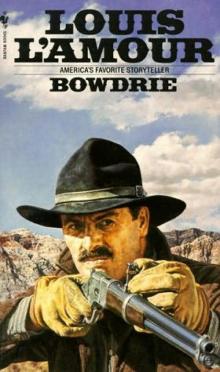 Collection 1983 - Bowdrie (v5.0)
Collection 1983 - Bowdrie (v5.0)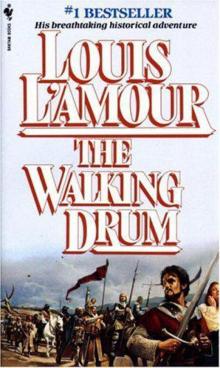 Novel 1984 - The Walking Drum (v5.0)
Novel 1984 - The Walking Drum (v5.0)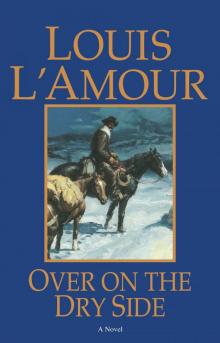 Over on the Dry Side
Over on the Dry Side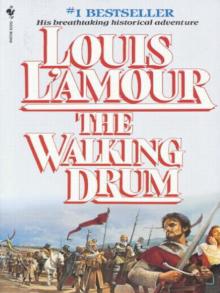 The Walking Drum
The Walking Drum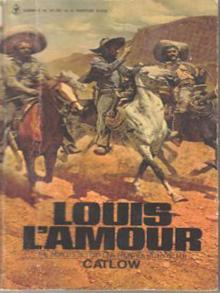 Novel 1963 - Catlow (v5.0)
Novel 1963 - Catlow (v5.0)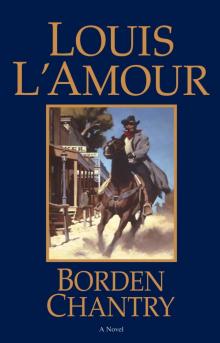 Borden Chantry
Borden Chantry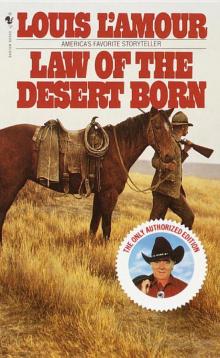 Collection 1983 - Law Of The Desert Born (v5.0)
Collection 1983 - Law Of The Desert Born (v5.0)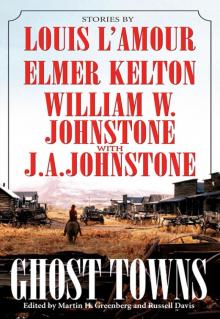 Ghost Towns
Ghost Towns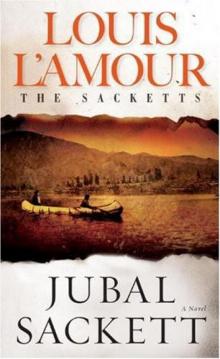 Jubal Sackett (1985) s-4
Jubal Sackett (1985) s-4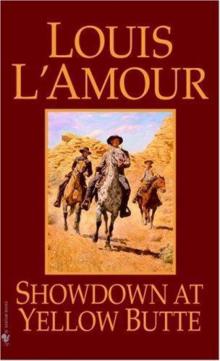 Novel 1953 - Showdown At Yellow Butte
Novel 1953 - Showdown At Yellow Butte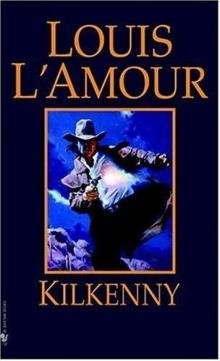 Kilkenny 03 - Kilkenny (v5.0)
Kilkenny 03 - Kilkenny (v5.0)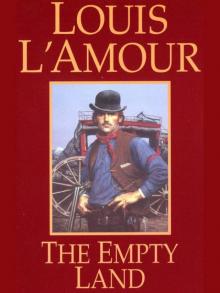 Novel 1969 - The Empty Land (v5.0)
Novel 1969 - The Empty Land (v5.0) Matagorda
Matagorda The First Fast Draw
The First Fast Draw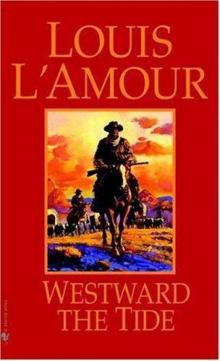 Novel 1950 - Westward The Tide (v5.0)
Novel 1950 - Westward The Tide (v5.0)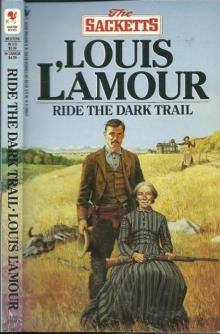 Ride the Dark Trail s-18
Ride the Dark Trail s-18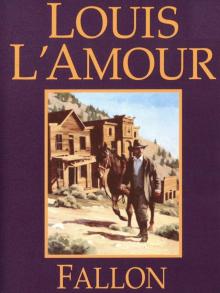 Novel 1963 - Fallon (v5.0)
Novel 1963 - Fallon (v5.0)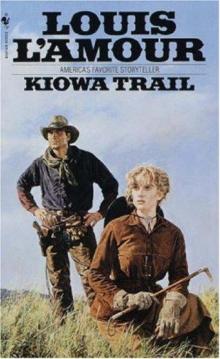 Novel 1964 - Kiowa Trail (v5.0)
Novel 1964 - Kiowa Trail (v5.0)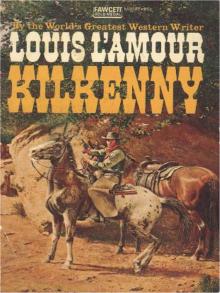 Kilkenny
Kilkenny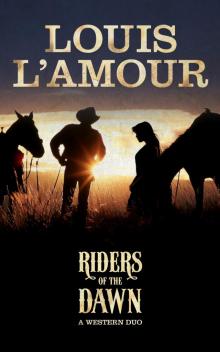 Riders of the Dawn
Riders of the Dawn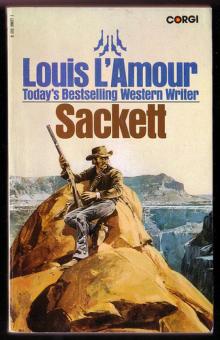 Sackett (1961) s-9
Sackett (1961) s-9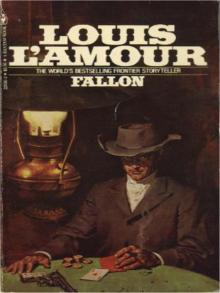 Fallon
Fallon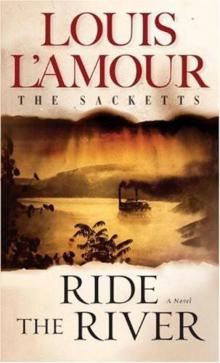 Ride the River (1983) s-5
Ride the River (1983) s-5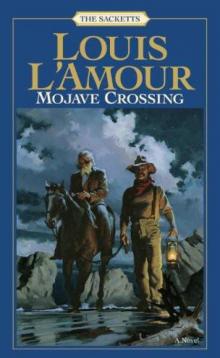 Mojave Crossing s-11
Mojave Crossing s-11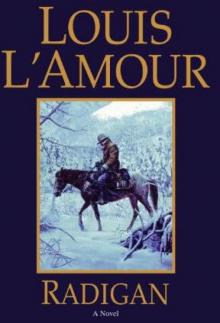 Novel 1958 - Radigan (v5.0)
Novel 1958 - Radigan (v5.0) The Collected Short Stories of Louis L'Amour, Volume Five
The Collected Short Stories of Louis L'Amour, Volume Five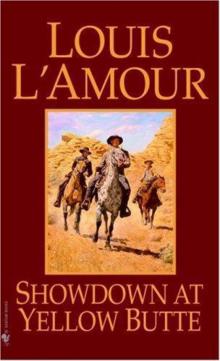 Novel 1953 - Showdown At Yellow Butte (v5.0)
Novel 1953 - Showdown At Yellow Butte (v5.0) Collection 1980 - Yondering
Collection 1980 - Yondering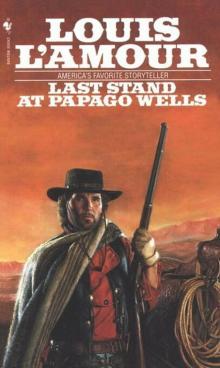 Novel 1957 - Last Stand At Papago Wells (v5.0)
Novel 1957 - Last Stand At Papago Wells (v5.0)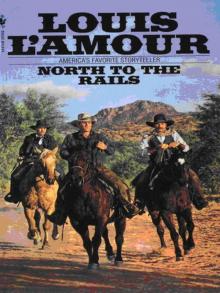 North To The Rails
North To The Rails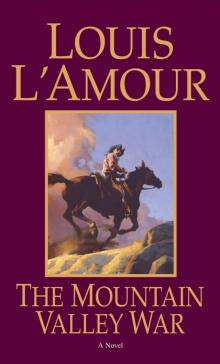 The Kilkenny Series Bundle
The Kilkenny Series Bundle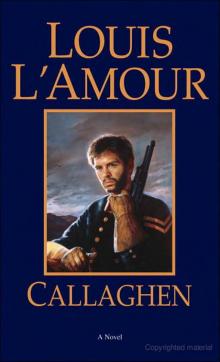 Novel 1972 - Callaghen (v5.0)
Novel 1972 - Callaghen (v5.0)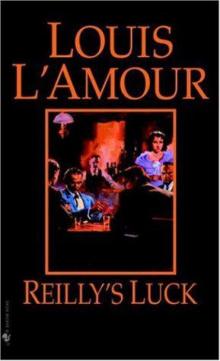 Novel 1970 - Reilly's Luck (v5.0)
Novel 1970 - Reilly's Luck (v5.0)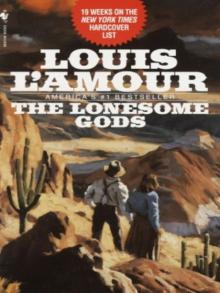 The Lonesome Gods
The Lonesome Gods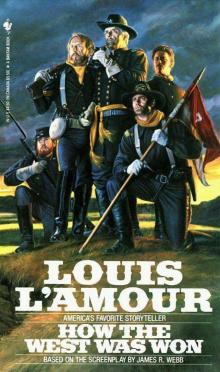 Novel 1963 - How The West Was Won (v5.0)
Novel 1963 - How The West Was Won (v5.0)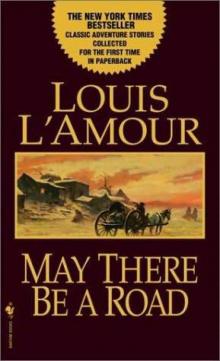 Collection 2001 - May There Be A Road (v5.0)
Collection 2001 - May There Be A Road (v5.0)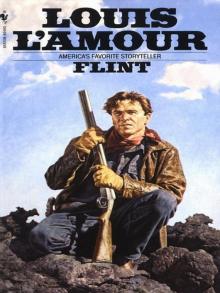 Flint
Flint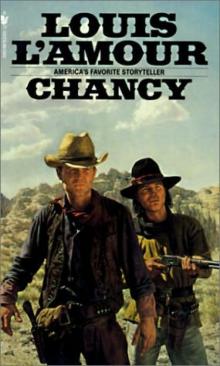 Novel 1968 - Chancy (v5.0)
Novel 1968 - Chancy (v5.0)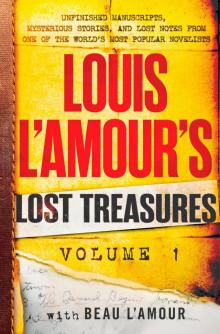 Volume 1: Unfinished Manuscripts, Mysterious Stories, and Lost Notes from One of the World's Most Popular Novelists
Volume 1: Unfinished Manuscripts, Mysterious Stories, and Lost Notes from One of the World's Most Popular Novelists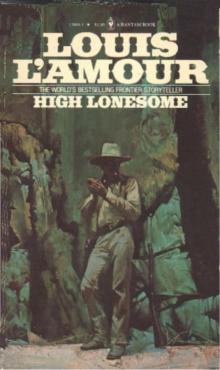 Novel 1962 - High Lonesome (v5.0)
Novel 1962 - High Lonesome (v5.0)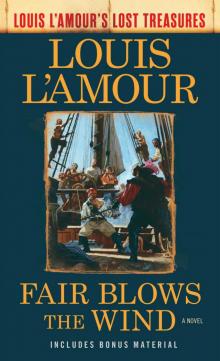 Fair Blows the Wind (Louis L'Amour's Lost Treasures)
Fair Blows the Wind (Louis L'Amour's Lost Treasures)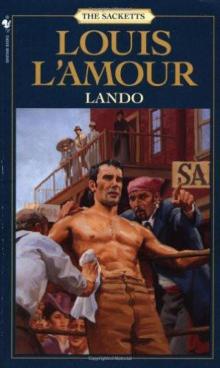 Lando s-8
Lando s-8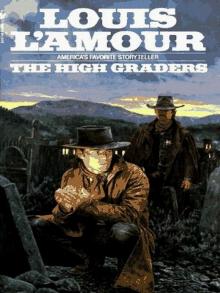 The High Graders
The High Graders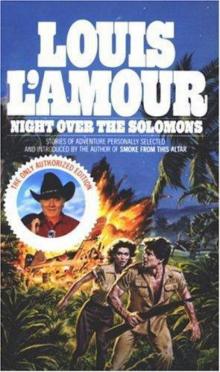 Collection 1986 - Night Over The Solomons (v5.0)
Collection 1986 - Night Over The Solomons (v5.0) The Collected Short Stories of Louis L'Amour, Volume 3
The Collected Short Stories of Louis L'Amour, Volume 3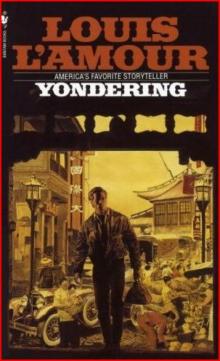 Collection 1980 - Yondering (v5.0)
Collection 1980 - Yondering (v5.0)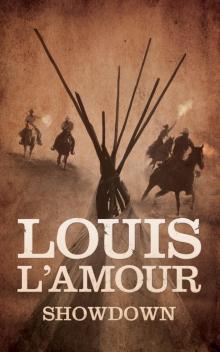 Showdown
Showdown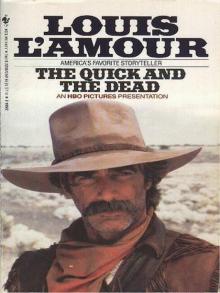 The Quick And The Dead
The Quick And The Dead Novel 1968 - Down The Long Hills (v5.0)
Novel 1968 - Down The Long Hills (v5.0)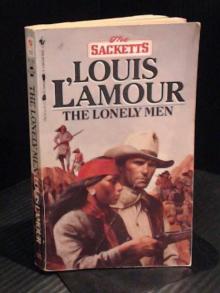 The Lonely Men s-14
The Lonely Men s-14 Bowdrie (Louis L'Amour's Lost Treasures)
Bowdrie (Louis L'Amour's Lost Treasures)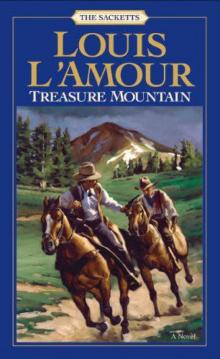 Treasure Mountain s-17
Treasure Mountain s-17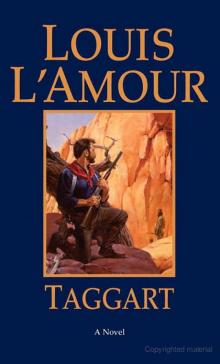 Novel 1959 - Taggart (V5.0)
Novel 1959 - Taggart (V5.0)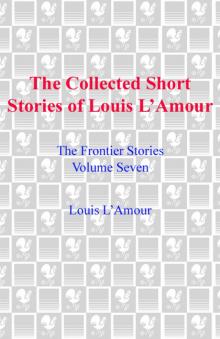 The Collected Short Stories of Louis L'Amour, Volume 7
The Collected Short Stories of Louis L'Amour, Volume 7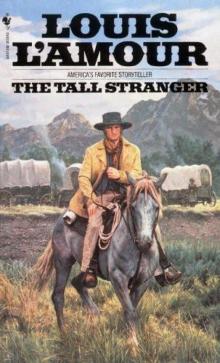 Novel 1957 - The Tall Stranger (v5.0)
Novel 1957 - The Tall Stranger (v5.0)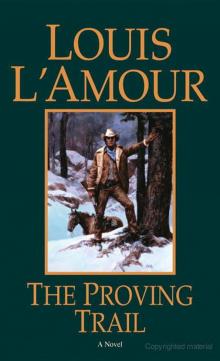 Novel 1978 - The Proving Trail (v5.0)
Novel 1978 - The Proving Trail (v5.0)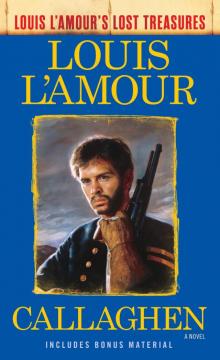 Callaghen (Louis L'Amour's Lost Treasures)
Callaghen (Louis L'Amour's Lost Treasures) Sitka
Sitka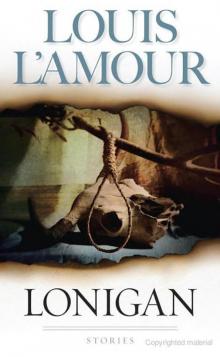 Collection 1988 - Lonigan (v5.0)
Collection 1988 - Lonigan (v5.0) The Californios
The Californios Novel 1966 - The Broken Gun (v5.0)
Novel 1966 - The Broken Gun (v5.0)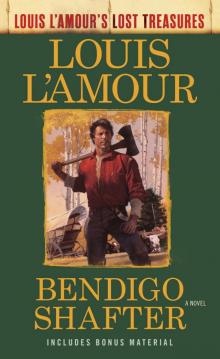 Bendigo Shafter (Louis L'Amour's Lost Treasures)
Bendigo Shafter (Louis L'Amour's Lost Treasures)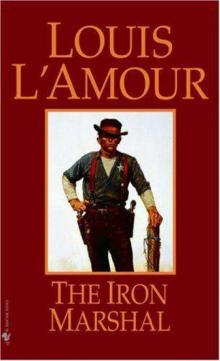 Novel 1979 - The Iron Marshall (v5.0)
Novel 1979 - The Iron Marshall (v5.0)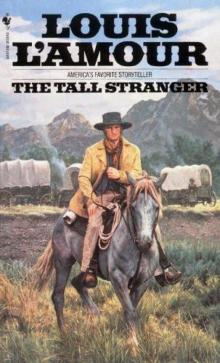 Novel 1957 - The Tall Stranger
Novel 1957 - The Tall Stranger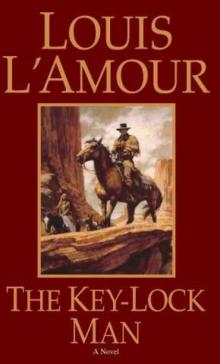 Novel 1965 - The Key-Lock Man (v5.0)
Novel 1965 - The Key-Lock Man (v5.0)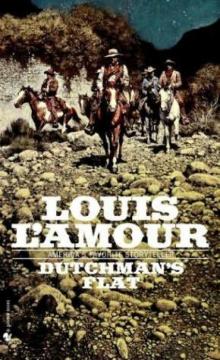 Collection 1986 - Dutchman's Flat (v5.0)
Collection 1986 - Dutchman's Flat (v5.0)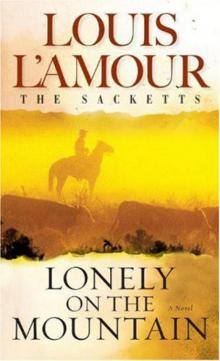 Lonely On the Mountain s-19
Lonely On the Mountain s-19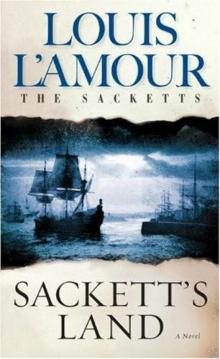 Sackett's Land
Sackett's Land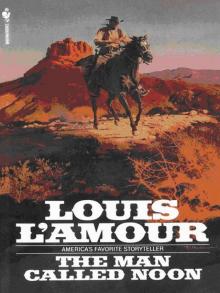 The Man Called Noon
The Man Called Noon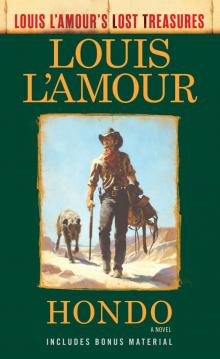 Hondo (Louis L'Amour's Lost Treasures)
Hondo (Louis L'Amour's Lost Treasures) The Lawless West
The Lawless West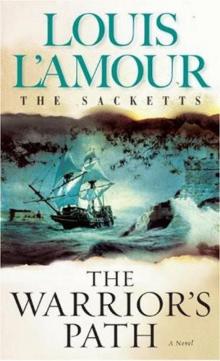 The Warrior's Path (1980) s-3
The Warrior's Path (1980) s-3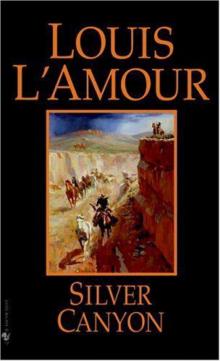 Novel 1956 - Silver Canyon (v5.0)
Novel 1956 - Silver Canyon (v5.0)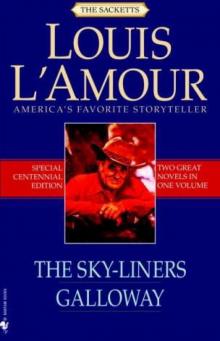 The Sky-Liners (1967) s-13
The Sky-Liners (1967) s-13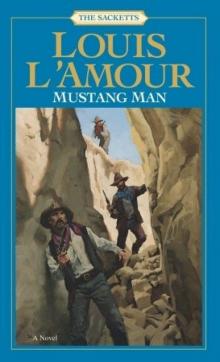 Mustang Man s-15
Mustang Man s-15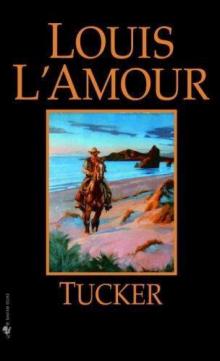 Novel 1971 - Tucker (v5.0)
Novel 1971 - Tucker (v5.0)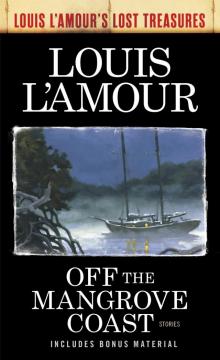 Off the Mangrove Coast (Louis L'Amour's Lost Treasures)
Off the Mangrove Coast (Louis L'Amour's Lost Treasures) Collection 2005 - Riding For The Brand (v5.0)
Collection 2005 - Riding For The Brand (v5.0)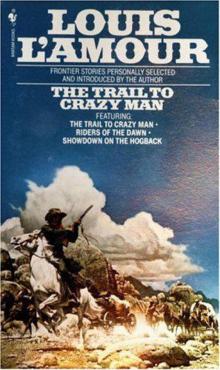 Collection 1986 - The Trail To Crazy Man (v5.0)
Collection 1986 - The Trail To Crazy Man (v5.0)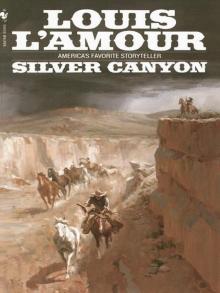 Silver Canyon
Silver Canyon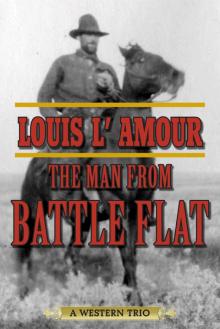 The Man from Battle Flat
The Man from Battle Flat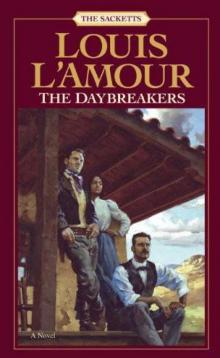 The Daybreakers (1960) s-6
The Daybreakers (1960) s-6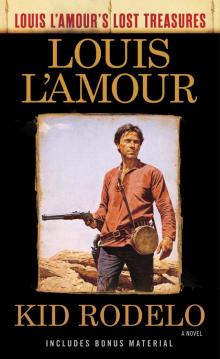 Kid Rodelo (Louis L'Amour's Lost Treasures)
Kid Rodelo (Louis L'Amour's Lost Treasures)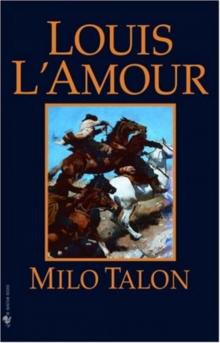 Milo Talon
Milo Talon Novel 1973 - The Man From Skibbereen (v5.0)
Novel 1973 - The Man From Skibbereen (v5.0)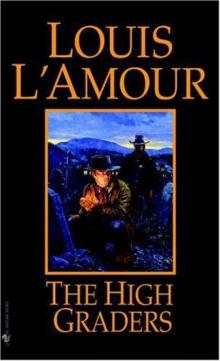 Novel 1965 - The High Graders (v5.0)
Novel 1965 - The High Graders (v5.0)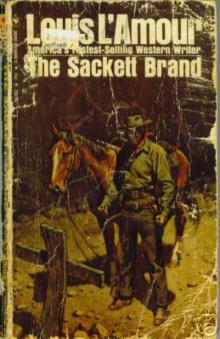 The Sacket Brand (1965) s-12
The Sacket Brand (1965) s-12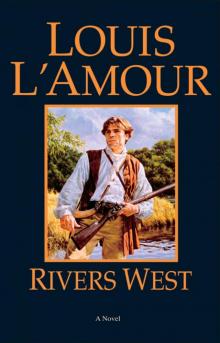 Rivers West
Rivers West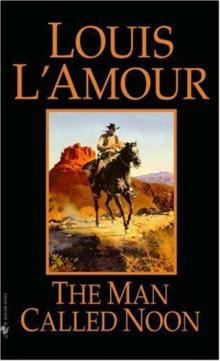 Novel 1970 - The Man Called Noon (v5.0)
Novel 1970 - The Man Called Noon (v5.0)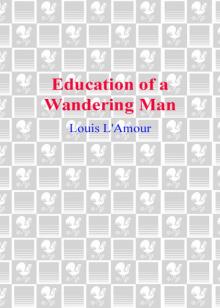 Education of a Wandering Man
Education of a Wandering Man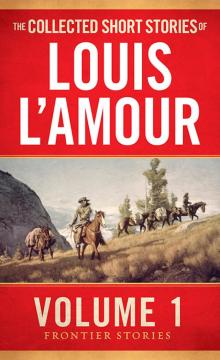 The Collected Short Stories of Louis L'Amour, Volume 1
The Collected Short Stories of Louis L'Amour, Volume 1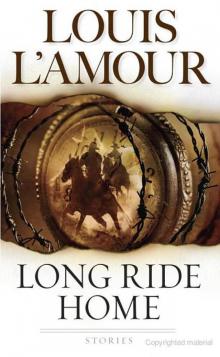 Collection 1989 - Long Ride Home (v5.0)
Collection 1989 - Long Ride Home (v5.0)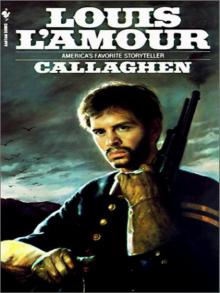 Callaghen
Callaghen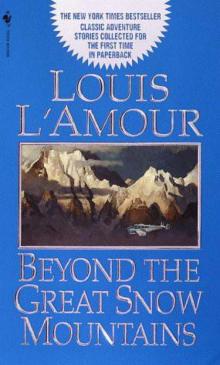 Collection 1999 - Beyond The Great Snow Mountains (v5.0)
Collection 1999 - Beyond The Great Snow Mountains (v5.0)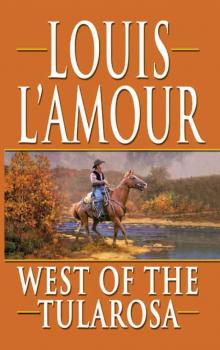 West of the Tularosa
West of the Tularosa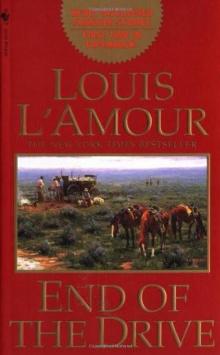 End Of the Drive (1997) s-7
End Of the Drive (1997) s-7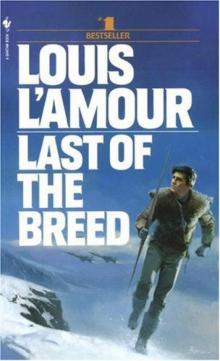 Novel 1986 - Last Of The Breed (v5.0)
Novel 1986 - Last Of The Breed (v5.0)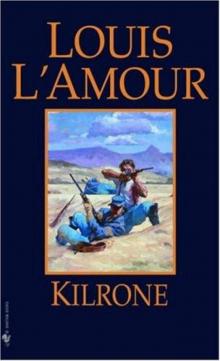 Novel 1966 - Kilrone (v5.0)
Novel 1966 - Kilrone (v5.0)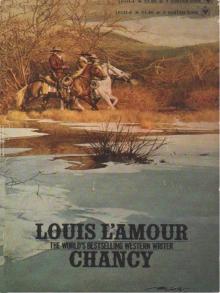 Chancy
Chancy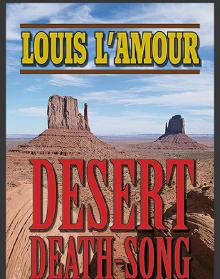 Desert Death-Song
Desert Death-Song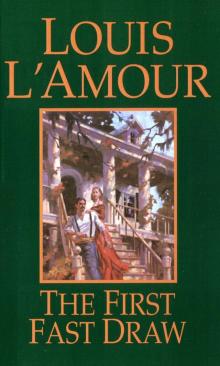 Novel 1959 - The First Fast Draw (v5.0)
Novel 1959 - The First Fast Draw (v5.0)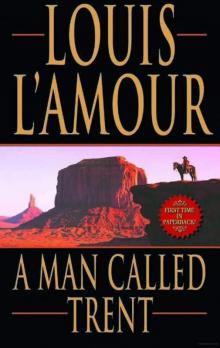 Kilkenny 02 - A Man Called Trent (v5.0)
Kilkenny 02 - A Man Called Trent (v5.0)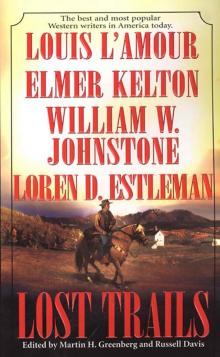 Lost Trails
Lost Trails Novel 1972 - Callaghen
Novel 1972 - Callaghen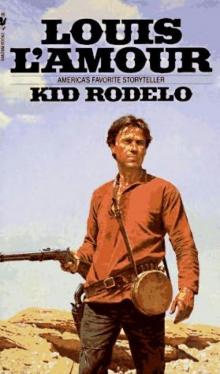 Novel 1966 - Kid Rodelo (v5.0)
Novel 1966 - Kid Rodelo (v5.0) The Collected Short Stories of Louis L'Amour, Volume 2
The Collected Short Stories of Louis L'Amour, Volume 2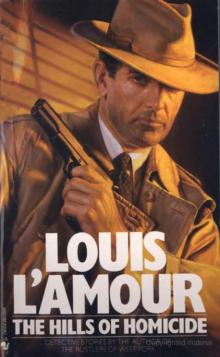 Collection 1983 - The Hills Of Homicide (v5.0)
Collection 1983 - The Hills Of Homicide (v5.0)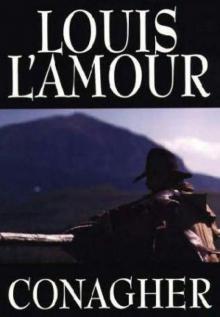 Novel 1969 - Conagher (v5.0)
Novel 1969 - Conagher (v5.0) Radigan
Radigan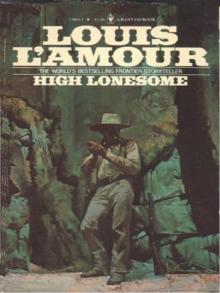 High Lonesome
High Lonesome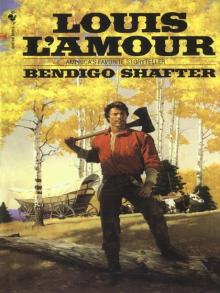 Bendigo Shafter
Bendigo Shafter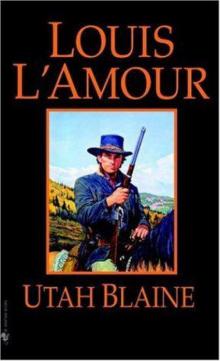 Novel 1954 - Utah Blaine (As Jim Mayo) (v5.0)
Novel 1954 - Utah Blaine (As Jim Mayo) (v5.0)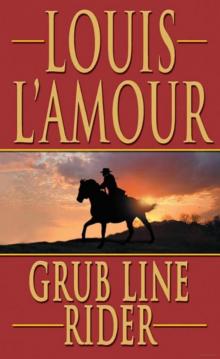 Collection 1990 - Grub Line Rider (v5.0)
Collection 1990 - Grub Line Rider (v5.0)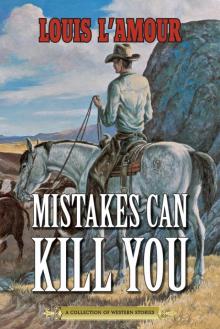 Mistakes Can Kill You
Mistakes Can Kill You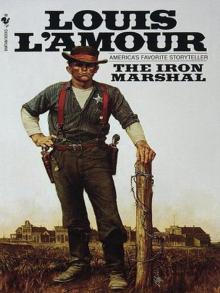 The Iron Marshall
The Iron Marshall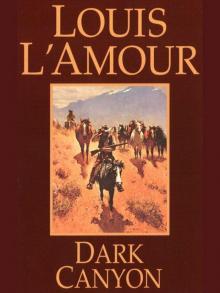 Novel 1963 - Dark Canyon (v5.0)
Novel 1963 - Dark Canyon (v5.0)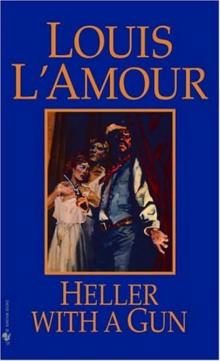 Novel 1955 - Heller With A Gun (v5.0)
Novel 1955 - Heller With A Gun (v5.0)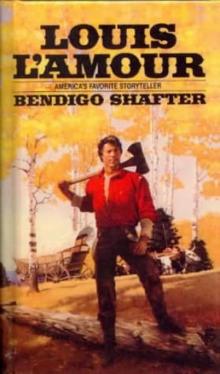 Novel 1978 - Bendigo Shafter (v5.0)
Novel 1978 - Bendigo Shafter (v5.0)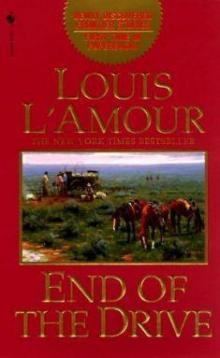 Collection 1997 - End Of The Drive (v5.0)
Collection 1997 - End Of The Drive (v5.0)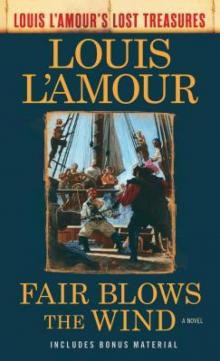 Fair Blows the Wind
Fair Blows the Wind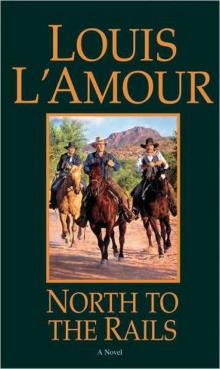 Talon & Chantry 07 - North To The Rails (v5.0)
Talon & Chantry 07 - North To The Rails (v5.0)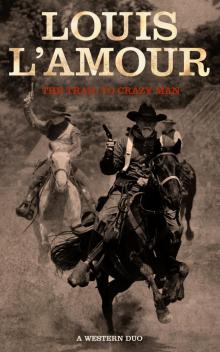 The Trail to Crazy Man
The Trail to Crazy Man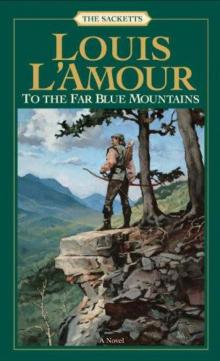 To the Far Blue Mountains (1976) s-2
To the Far Blue Mountains (1976) s-2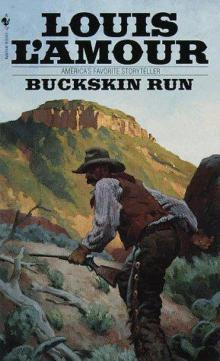 Collection 1981 - Buckskin Run (v5.0)
Collection 1981 - Buckskin Run (v5.0)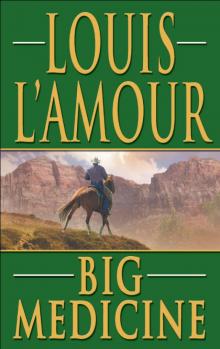 Collection 2008 - Big Medicine (v5.0)
Collection 2008 - Big Medicine (v5.0)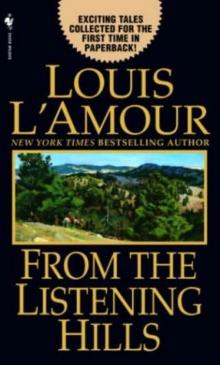 Collection 2003 - From The Listening Hills (v5.0)
Collection 2003 - From The Listening Hills (v5.0)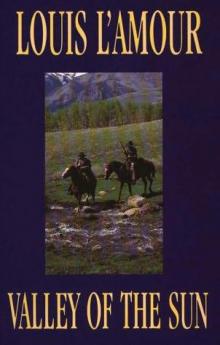 Collection 1995 - Valley Of The Sun (v5.0)
Collection 1995 - Valley Of The Sun (v5.0)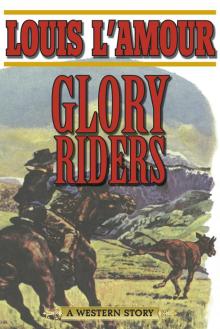 Glory Riders
Glory Riders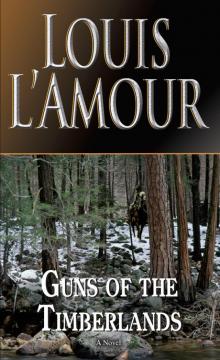 Guns of the Timberlands
Guns of the Timberlands The Collected Short Stories of Louis L'Amour, Volume Four
The Collected Short Stories of Louis L'Amour, Volume Four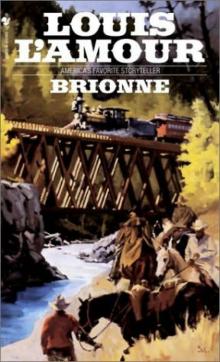 Novel 1968 - Brionne (v5.0)
Novel 1968 - Brionne (v5.0)